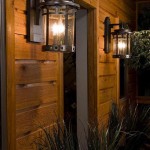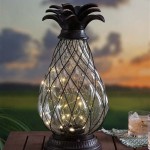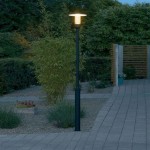How To Waterproof Wood Furniture For Outdoor Use
Wood furniture offers a touch of natural beauty and elegance to any outdoor space. However, exposing wooden furniture to the elements can lead to significant damage if it's not properly protected. Rain, sun, humidity, and even pests can wreak havoc on untreated wood, causing it to warp, crack, rot, and fade. Waterproofing is crucial to extend the lifespan and maintain the aesthetic appeal of your outdoor wood furniture. This article provides a comprehensive guide on how to effectively waterproof your wood furniture for outdoor use.
Before embarking on any waterproofing project, understanding the different types of wood is essential. Hardwoods, like teak, cedar, and redwood, possess natural oils that make them more resistant to moisture and decay compared to softwoods like pine and fir. While hardwoods require less intensive treatment, they still benefit from waterproofing to enhance their longevity and appearance. Conversely, softwoods require more rigorous waterproofing methods to ensure adequate protection.
Preparation is key to achieving a lasting waterproof finish. The surface must be clean, dry, and free from any existing coatings or imperfections. Neglecting this step will compromise the adhesion of the waterproofing product and ultimately reduce its effectiveness. The following sections will outline the essential steps to properly prepare your wood furniture for waterproofing.
Step 1: Cleaning the Wood Furniture
The first step in preparing wood furniture for waterproofing entails a thorough cleaning process. This removes dirt, grime, mildew, and any loose particles that could interfere with the waterproofing product's ability to bond to the wood surface. The cleaning method depends on the condition of the furniture and the type of wood involved.
For general cleaning, a mixture of warm water and mild detergent works effectively. Use a soft-bristled brush or sponge to scrub the surface gently, paying particular attention to areas with accumulated dirt or stains. Rinse thoroughly with clean water to remove any soap residue and allow the furniture to dry completely before proceeding.
If mildew or mold is present, a stronger cleaning solution is necessary. Combine water with either bleach or a commercially available mildew cleaner, following the manufacturer's instructions carefully regarding dilution ratios and safety precautions. Apply the solution to the affected areas, scrub gently, and rinse thoroughly. Ensure the furniture is completely dry before moving on to the next step.
For furniture with stubborn stains or old finishes, a pressure washer can be used cautiously. However, it's crucial to use a low-pressure setting and a wide-angle nozzle to avoid damaging the wood. Keep the nozzle at a safe distance from the surface and move it steadily to prevent uneven cleaning. After pressure washing, allow the furniture to dry completely before proceeding.
Step 2: Sanding the Wood Surface
Sanding creates a smooth, even surface that allows the waterproofing product to penetrate the wood effectively. It also removes any existing imperfections, such as scratches, dents, or remnants of old finishes. The level of sanding required depends on the condition of the furniture and the type of finish being applied.
For furniture with a rough surface or an existing finish, start with a coarser grit sandpaper (e.g., 80-grit) to remove the old finish and level out any imperfections. Work with the grain of the wood to avoid creating unsightly scratches. Once the surface is relatively smooth, switch to a medium-grit sandpaper (e.g., 120-grit) to further refine the surface.
For furniture that is already relatively smooth, start with a medium-grit sandpaper (e.g., 120-grit) and then move to a fine-grit sandpaper (e.g., 220-grit) for a polished finish. This approach minimizes the amount of wood removed while still creating a suitable surface for waterproofing.
When sanding, use a sanding block or orbital sander to ensure even pressure and prevent uneven sanding. Work in long, steady strokes, following the grain of the wood. After each sanding stage, wipe down the furniture with a tack cloth to remove any sanding dust. This ensures a clean surface for the next sanding stage or the application of the waterproofing product.
If the furniture has intricate details or hard-to-reach areas, use sandpaper folded or wrapped around a small object, or use specialized sanding tools designed for detail work. Patience and attention to detail are crucial to achieving a smooth, even surface across the entire piece of furniture.
Step 3: Applying Wood Preservative (Optional but Recommended)
Applying a wood preservative before waterproofing offers an additional layer of protection against rot, decay, and insect infestation. While not strictly necessary, it is highly recommended, especially for softwood furniture or furniture that will be exposed to harsh weather conditions. Wood preservatives penetrate deep into the wood fibers, providing long-lasting protection from within.
Choose a wood preservative specifically designed for outdoor use and follow the manufacturer's instructions carefully. Apply the preservative liberally, ensuring it penetrates all surfaces of the wood, including end grains and joints, which are particularly vulnerable to moisture damage. Use a brush or sprayer to apply the preservative, depending on the product's consistency and the size of the furniture.
Allow the wood preservative to dry completely before proceeding to the waterproofing stage. The drying time varies depending on the product and the ambient temperature and humidity. Follow the manufacturer's recommendations for drying time to ensure the preservative has fully penetrated the wood.
Consider using a wood preservative that also contains UV inhibitors. These inhibitors help protect the wood from the damaging effects of sunlight, preventing fading and discoloration. This is particularly important for furniture that will be exposed to direct sunlight for extended periods.
After the wood preservative has dried completely, lightly sand the surface with a fine-grit sandpaper (e.g., 220-grit) to remove any raised grain or imperfections caused by the preservative. Wipe down the furniture with a tack cloth to remove any sanding dust before proceeding to the waterproofing stage.
Choosing a Waterproofing Product
Selecting the right waterproofing product is crucial for achieving long-lasting protection for your outdoor wood furniture. There are various types of waterproofing products available, each with its own advantages and disadvantages. The best choice depends on the type of wood, the desired level of protection, and the aesthetic preferences.
Spar Urethane: Spar urethane is a popular choice for outdoor wood furniture due to its excellent water resistance and flexibility. It forms a durable, protective film that can withstand the expansion and contraction of wood caused by temperature and humidity changes. However, it requires multiple coats and can yellow over time, especially with prolonged sun exposure.
Marine Varnish: Marine varnish is specifically designed for use on boats and other marine equipment, making it an excellent choice for outdoor wood furniture that will be exposed to harsh weather conditions. It offers superior water resistance and UV protection compared to spar urethane. However, it can be more expensive and requires careful application to avoid brush marks.
Wood Sealants: Wood sealants penetrate the wood fibers, providing water repellency from within. They do not form a film on the surface, so they are less likely to crack or peel. However, they offer less protection against scratches and abrasion compared to spar urethane and marine varnish. Wood sealants are often a good choice for furniture that already has some natural water resistance, such as teak or cedar.
Exterior Wood Stains with Waterproofing Properties: Some exterior wood stains contain waterproofing additives that provide both color and protection to the wood. These stains are available in a variety of colors and opacities, allowing you to customize the look of your furniture while also providing water resistance. However, the level of waterproofing may not be as high as with dedicated waterproofing products.
When choosing a waterproofing product, consider the Volatile Organic Compounds (VOC) content. VOCs are released into the air as the product dries and can contribute to air pollution. Opt for low-VOC or zero-VOC products to minimize your environmental impact and improve indoor air quality during application.
Applying the Waterproofing Product
Proper application of the waterproofing product is crucial for achieving a durable and effective finish. Follow the manufacturer's instructions carefully regarding application methods, drying times, and the number of coats required. Applying too little product will result in inadequate protection, while applying too much can lead to runs, drips, and a sticky finish.
Use a high-quality brush or sprayer to apply the waterproofing product evenly across the entire surface of the furniture. Work with the grain of the wood to ensure proper coverage and avoid brush marks. Apply thin, even coats, allowing each coat to dry completely before applying the next. Sand lightly between coats with a fine-grit sandpaper (e.g., 320-grit) to remove any imperfections and improve adhesion.
Pay particular attention to edges, corners, and joints, as these areas are more vulnerable to moisture damage. Apply multiple coats to these areas to ensure adequate protection. Allow the final coat to cure completely before exposing the furniture to the elements. Curing times vary depending on the product and the ambient temperature and humidity.
Consider using a respirator or mask during application, especially when using products with high VOC content. Ensure adequate ventilation in the work area to prevent the buildup of fumes. Wear gloves to protect your hands from the waterproofing product.
After the waterproofing product has cured completely, inspect the furniture for any imperfections or areas that may require additional attention. Touch up any areas as needed and allow the touch-up to cure completely before using the furniture.

How To Waterproof Outdoor Furniture The Easy Way Maison De Pax

How To Seal Wood For Outdoor Use Diy

How To Seal Wooden Furniture When You Move It Outdoors

How To Waterproof Wood With Oil Sealant Or Stain And Sealer Bob Vila

How To Seal Wooden Furniture When You Move It Outdoors

How To Waterproof Outdoor Furniture The Easy Way Maison De Pax

How To Protect Outdoor Wood Furniture Osmo

6 Ways To Treat Wood For Outdoor Use Pine And Poplar

How To Seal Furniture So It S 100 Waterproof Durable Wood Sealer Lily Ardor

How To Waterproof And Seal An Outdoor Table With Milkoil Miss Mustard Seed S Milk Paint







